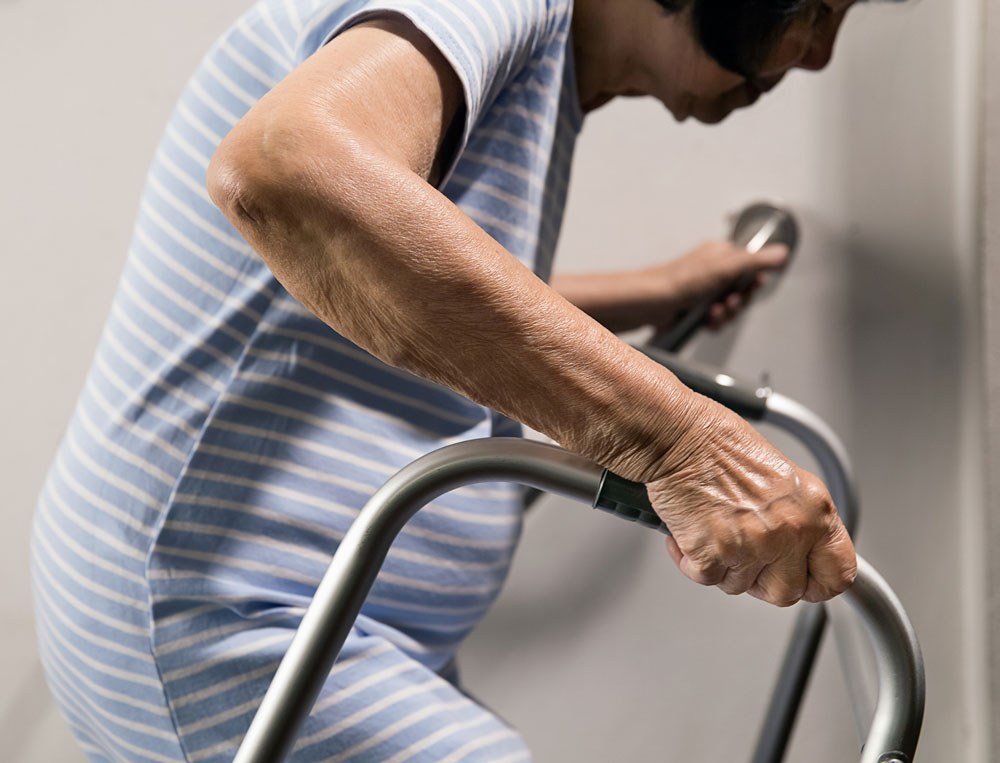 Fear of falling (FoF) and frailty often go hand-in hand for today’s older adults. In particular, FoF can lead to a self-limitation of activities. Such limitations are then followed by further decline in physical capacities which may predispose to frailty. But the exact nature of the relationship between the 2 conditions has never been clearly delineated. In search of realistic therapeutic goals and treatments, researchers from Brazil conducted a systematic literature review to better understand the totality of the evidence detailing the association between frailty and FoF.
Fear of falling (FoF) and frailty often go hand-in hand for today’s older adults. In particular, FoF can lead to a self-limitation of activities. Such limitations are then followed by further decline in physical capacities which may predispose to frailty. But the exact nature of the relationship between the 2 conditions has never been clearly delineated. In search of realistic therapeutic goals and treatments, researchers from Brazil conducted a systematic literature review to better understand the totality of the evidence detailing the association between frailty and FoF.
Their search found 4,342 articles, of which 10 articles covering 6,294 community-dwelling older adults (age range 61–84; 61.8% women) were ultimately analyzed. Among the longitudinal studies, adjusted odds ratios (ORs) ranged from 1.18 (95% CI = 1.02; 1.36) to 9.87 (95% CI = 5.22; 18.68), while the adjusted odds ratios of the cross-sectional studies ranged from 1.04 (95% CI = 1.02; 1.07) to 7.16 (95% CI = 2.34; 21.89). The authors noted that the wide variation in the ORs may be related to racial, demographic, anthropometric, socioeconomic, or cultural differences in the populations studied since the studies were from around the world. And they noted the methodological and statistical differences due to different instruments used to assess these 2 geriatric syndromes.
While most of the analyzed studies described positive associations between the 2 conditions, they did identify 1 study that found no significant association between the syndromes, but that is because there is a bidirectional relationship among common diseases in older adults with FoF. This relationship creates a “vicious cycle” making it difficult to confirm an association.
Adjustment variables also differed amongst the 10 studies. However, the authors did note that one recent study found female sex, history of falls, low physical performance, and depressive symptoms were the variables most associated with FoF.
How FoF leads to frailty in this population has been widely studied. Typically, exaggerated concerns about falling lead to limiting activities, particularly activities of daily living, which ultimately leads to long-term reductions in muscle strength, deficits in balance and mobility, and basic deconditioning. The authors note that this hypothesis has been corroborated with research that shows a 1-point increase in the Falls Efficacy Scale-International (FES-I) was associated with a higher risk of both mobility disability and poor physical performance. The authors also note that the latter 2 variables may be predisposing factors for frailty in and of themselves.
Moreover, self-restrictions in activities of daily living are tied to decreased energy expenditure, which leads to intramuscular fat accumulation which activates a cascade of pro-inflammatory cytokines. That cascade plays a role in muscle protein degradation and metabolic pathways that regulate homeostasis, leading to loss of muscle strength and proprioception, again predisposing the individual to frailty.
In conclusion, these authors used longitudinal and cross-sectional evidence to show that FoF is associated with frailty in community-dwelling older adults. They conclude that understanding this association can help clinical practitioners to develop better screening protocols for frailty, as well as for rehabilitation, prevention, and health promotion among members of this audience. Reducing FoF and the consequent development of frailty and its known negative outcomes is key to keeping this patient population healthy.
Source: de Souza LF, Canever JB, Moreira BS, Danielewicz AL, de Avelar NCP. Association between fear of falling and frailty in community-dwelling older adults: a systematic review. Clin Interv Aging. 2022;17:129-140.









